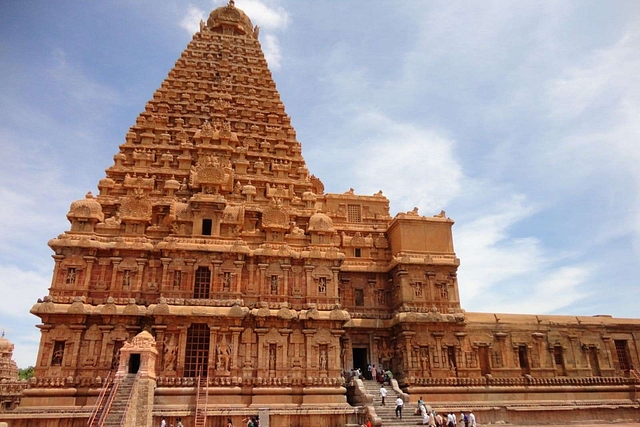
Literature For Music, Music For Masses: Why This Suggestion Of Palaniswami Needs To Be Taken Seriously
Last week, speaking at an event, Edappadi K Palaniswami stressed on the need to render Tamil religious works like Thevaram, Thiruvasagam and Divya Prabhandam in the musical format so that it reaches the masses.
This suggestion of the Tamil Nadu chief minister can go a long way in fighting the cultural illiteracy of Tamil masses to their own traditions.
On 23 February 2019, Tamil Nadu Chief Minister Edappadi K Palaniswami stated that there was a need to render Tamil spiritual hymns like Thevaram, Thiruvasagam and Divya Prabhandam in the musical form so that they could once again reach out to the masses. He was speaking at the Tamil Nadu Music and Fine Arts University on its Founder's Day.
There is indeed a great need to do this.
There are many temples in Tamil Nadu which are more than thousand years old. In 2010, when there was a grand function to mark the 1000th anniversary of the Brihadeeshwara temple of Thanjavur, built by Raja Raja Chola, the great (947 CE - 1014 CE), Dharma Rakshana Samithi (DRS), under the guidance of His Holiness Swami Dayananda Saraswati, launched a movement called ‘Tamil Nadu the land of Temples’ (Kovil konda Tamilagam).
The aim of the drive was to document temples that were either thousand years or more old in every village and town of Tamil Nadu. Scholars like Dr Nagaswamy, epigraphist S Ramachandran etc., were roped in . Many such temples older than thousand years from almost all quarters of Tamil Nadu were identified through their references in devotional hymns of the Azhwars and Nayanars. Unfortunately, the movement also discovered that in most of the places, the local people never knew about the Pasurams and Pathigams and the importance of their own temple was lost on them.
In other words, when a particular village or town forgets the Pasuram or Pathigam associated with their locality, their cultural capital gets easily deteriorated. This can also lead to the temple being not properly maintained and the priceless jewels and sacred deity forms landing up in alien museums through illegal means and idol smuggling mafia. The sensitising of the people to the local Pasurams and Pathigams can actually sensitise the local communities to the importance of their temples. This in turn can make the community more culturally aware and spiritually united.
There is also another great advantage.
Once, when there was a lot of caste-based violence in the state, this writer interviewed a very famous Sri Vaishnava preacher. The preacher stated that if only the people understand the significance of the fact that they worship in their temple both Thirumangai Azhwar and Thirupaan Azhwar side by side, would they eschew caste violence and live with mutual love and respect.
Swarajya has already reported the role of a temple priest in bringing in social revolution and harmony by reliving the carrying of Thirupaan Azhwar by Lokasaranga in his own shoulders.
So the spreading of Thevaram, Thiru Manthiram, Thiruvachagam, Thirupukazh and Nalaayira Divya Prabandam, by rendering them in music to the masses of Tamil Nadu will have a great beneficial effect. As a part of value addition, each temple which has a Pasuram or Pathigam or Thirupukazh associated with it can create a musical CD giving prominence to those songs and sell them in those temples. This will also boost the local economy and also increase pilgrimage tourism increasing the cultural bonds of the people while also making Tamil language and culture prosper.
At the same time care should be taken not to get into the false equivalence of adding to the genuine Thirumurais and Divya Prabantham the cheap imitations of proselytising cults whose only aim was to use the forms to spread their monocultures. That would offset the benefits of spreading Thirumurais and Divya Prabantham.